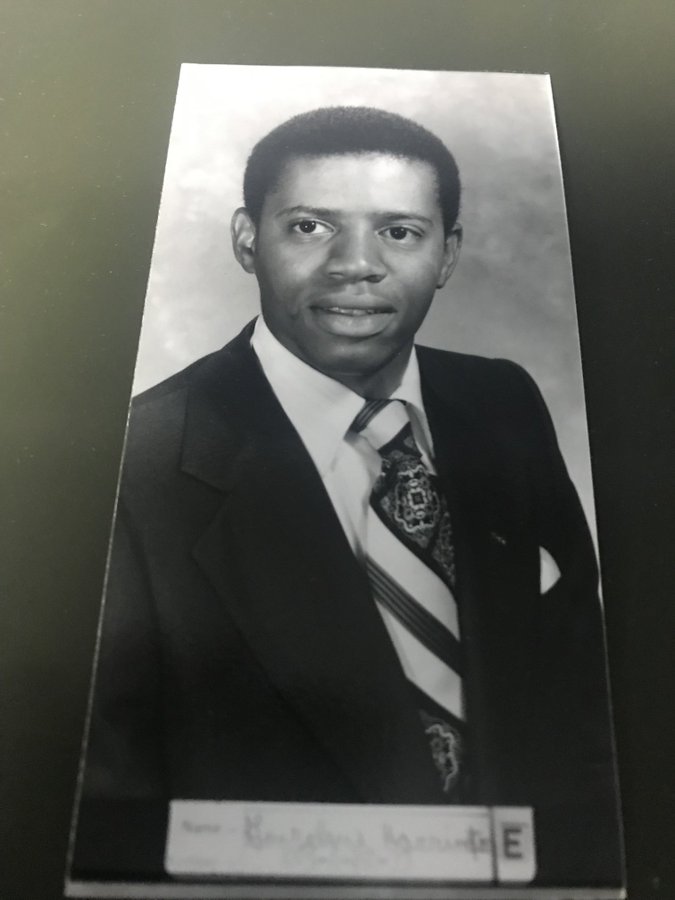Sports obituary: Harrington ran for powerful track teams
Published 1:45 am Wednesday, September 18, 2024

- Gonzolous Harrington. From the Post files, 1976.
By Mike London
mike.london@salisburypost.com
SALISBURY — Gonzolous Harrington came along at a time of legends in Salisbury in the early 1970s. so he isn’t talked about much, but he was an important part of some of the county’s mightiest track and field teams.
Harrington died at 69 in Winston-Salem on Aug. 25. His obituary was published recently in the Salisbury Post.
Pete Stout was head coach of Boyden’s track and field teams, as well as the football teams, in Harrington’s high school days, so gridiron greats such as Roger Jackson, Robert Pulliam, Kenny Holt, Terry Beattie, Aubrey Childers and Ellis Alexander, to list just a few, were expected to also compete in the realm of track and field.
Those powerful sprinters, leapers and throwers were joined by young men who were among the best in the Piedmont in their track specialties, athletes such as pole vaulter Charles Busby, broad jumper Mike Partee, triple jumper Ollie Jones and miler Coleman Ramsey. Plus a host of relay standouts.
Harrington was a talented runner whose forte was those events between the sprinters and the long-distance men. He could get after it in the mile (four laps around the track) or in the 880-yard run (two laps, a half mile).
High school track distances have been measured in meters for more than 40 years now. Today’s Rowan athletes run the 1600 and the 800 meters, rather than the mile and the 880. That 800-meter distance is essentially 875 yards, so they ran an extra 5 yards back in the day.
Boyden won the Western North Carolina High School Activities Association championship in track and field in 1970 and 1971. There was a three-peat in 1972, after the school on Lincolnton Road became known as Salisbury High to reflect its dual heritage of Boyden, an all-white school until the 1960s, and J.C. Price, which had served the Black student population of Salisbury until it closed in the spring of 1969, with full integration finally achieved.
Boyden track so throughly dominated the local competition for a time that Boyden won 15 of 16 events in the 1971 Rowan County Championships. Boyden broke the existing county records in nine of those events.
Boyden amassed 227 points in the 1971 county meet. East Rowan was second with 79.5. West Rowan had the only individual champion, not from Boyden, as Bill Cohen won the 440-yard dash in 51.6 seconds.
Harrington was the county champion in the 880, clocking 2:04.3.
North Rowan and East Rowan were able to narrow the gap somewhat in 1972 after many of Stout’s stars graduated, but he was able to reload sufficiently enough that the Hornets still won the county meet with 166 points. North, led by hurdler Sam Neely, piled up 124 points for second, while East amassed 93.
Harrington didn’t repeat his title in the 880 in the 1972 Rowan County Championships, but he was champion in the mile in 4:46.6.
Harrington played a key role in a legendary triumph of Rowan track and field that occurred on Saturday, April 17, 1971, as a group of 15 Boyden athletes, about half the track team, headed to the Duke-Durham Relays, a multi-state event held at Wallace Wade Stadium. It was the biggest annual track event held in North Carolina and one of the marquee events in the Southeast — 90 schools represented, more than 1,500 athletes.
The night before they hit the road for Durham, Boyden athletes competed in the Metrolina Relays, finishing second (100 points to 86) to Myers Park, a track powerhouse that would win the 4A NCHSAA championship that year.
After a few hours sleep, without the approval of coaches or administration, providing their own transportation, the local athletes piled into family vehicle and headed to Durham. They arrived at Duke with just enough time to warm up before the meet began at 10 a.m.
It was a wild adventure, but they were teens and they wanted to test themselves against the best in the South, wanted to see if they were just big fish in a small pond, or if they were as good as they thought they were. They were confident Jackson could hurdle with any teenager in the South, but beyond that, they really weren’t sure.
As it turned out, they were every bit as good as they thought they were. There were two classifications at the Durham meet — schools with more than 1,000 students and schools with less than 1,000. Boyden scored 41 points and won a small-school division that consisted of 48 teams.
Jackson was sensational, did what they expected him to do, but most of Boyden’s points came in the relay events.
They won a relay none of them had never competed in before — the sprint medley relay, with four men covering a mile, with different intervals.
The first two runners ran 220-yard sprints. The third athlete was tasked with a 440. The fourth man would gut out the last two laps — 880 yards at very close to full throttle.
Childers and Beattie were marvelous sprinters, proven champions. They handled the 220s. Dennis Brisson, a super relay man, ran the 440. Harrington’s job was the 880 that finished the race.
The quartet’s winning time was 3:40.6.
After graduating with Salisbury’s Class of 1972, Harrington went on to Livingstone College. He received his certification from Cincinnati College of Mortuary Science in 1976.
He operated Harrington Funeral Home in Elkin and also worked with Salisbury’s Noble and Kelsey Funeral Home.
He is survived by his wife, Mercedes Lewis Harrington, and a large family.





